| Umělec magazine 2003/2 >> I had to edit myself a bit (Interview with Petra Vargová) | List of all editions. | ||||||||||||
|
|||||||||||||
I had to edit myself a bit (Interview with Petra Vargová)Umělec magazine 2003/201.02.2003 Zuzana Štefková | q&a | en cs |
|||||||||||||
|
How did you start working with new media?
I started in the studio of conceptual tendencies with Miloš Šejn. I spent a year there, and I liked it, but right in the first year I received the studio prize and that’s probably what chased me away. I wanted to go somewhere where I wouldn’t have such an easy life, and so I went to Knížák’s [ed.: Milan Knížák is the controversial head of the National Gallery and Professor at AVU] studio. But once there I realized that I don’t have a relationship to material, to things. So there was just one possibility: new media. Though at that time it was call video art. That was good. No one talked to me, people were using a different means for communicating — the internet. In 1996, it was still very new... And so I started learning. There were no lessons like you have today, you knew only what you learnt — so actually I am an autodidact... How did your approach towards new media develop? Are you an active inhabitant of virtual space? Not really. I got tired of it. There was a time when I said to myself that I wouldn’t work with the computer anymore. I was really tired of it. Everyone was suddenly a media artist, everywhere were interactive installations and so on. Since the 90’s nothing changed. It’s still the same principle of action-reaction, but the classic means of expression are not suitable media for me, and interactive installations are just one of many possibilities. I never made classic video art, you know, to take the camera and go filming and then edit it and have a cassette with art. I didn’t find that interesting. Though I do have some footage on video, for example, Monster, but that was a video-installation that worked with the frame of reference or DOA2. In the 90’s I was interested in hyper-realistic rendering, interactivity and animation and virtual reality, but I’ve never done projects for the internet... I don’t know why, but this doesn’t satisfy me. [These projects] always end up in graphics, and that seems too superficial to me. It’s something different when you connect to the internet with the outer world, then that’s something more interesting… A presentation through the internet can significantly lower the cost... That’s true. And it is a perfect communication machine, when I had an exhibition in the Švestka Gallery in 2001, there was a camera connected to the internet. The exhibition was on-line. I would say that it was the first on-line exhibition in our country, but I never looked into it, so maybe not. Anyway, many people saw it, many who wouldn’t otherwise go to a gallery... It’s true that I work for the internet commercially. I make my living that way, and so I don’t feel the need to put my art into it. But this could change very quickly. One of your works is called From the Intimate Life of 3D Models. Have you ever tried virtual sex? No, but I was interested in it, otherwise I wouldn’t have made Binary.sex. This has been an attractive theme for decades. They keep trying it, people react differently to it. I liked very much a project by Alexej Sulgin. Most people know how he plays on a 386, but he does many good things. They are something like dildos for free slots in a PC. Only instead of a floppy drive you install a sexual attachment and then you get off with it at home on your computer. He had very nice models made and you could also connect it to other computers. Simply perfect... So what about computer games? What do you play? Nothing. I played a few times, but I was hopeless. It isn’t my thing. I like to watch how others play, and I’m interested in how they’re made: the architecture of the game, its graphics, visual dimensions. So I spend a lot of time investigating games. When they opened a video game hall in Prague, I went to have a look. I loved the truck races. It had a wonderful front screen, with hanging toys and football team flags. That was great. Don’t you think that compared to computer games some art projects in new media are a little old-dated? Games are the furthest ahead. If we’re not talking about military applications, then they’re on another level. Game producers have the money to develop, and in the game industry everything shoots ahead very quickly. Imitating this and doing something better in art is unthinkable. But you can do it differently; you make a shift and you try to show people things from a different perspective. And what about DOA2? How did you get the idea? I was in Sweden, where I went to do nothing, actually. Then I found out they weren’t doing anything either, only playing games, or one game. They all had PS2 (Sony PlayStation2), which was new at the time, you could tell, fantastic graphics, everything was fast. They projected it on a screen, it was exciting. The figures were life-sized. You don’t see this often. Usually you have a monitor or a TV screen and everything is small... So I finally said that I would play too, and I dove in, straight into the game. It was a horrible work. In the end it got out of hand. I was at it 12 hours a day, and I nearly didn’t manage to finish it before my departure. Confronting these visual figures, you could see how little they had in common with the human body. The proportions were all wrong. The limbs are too longs and the heads tiny. You realize this only when you see them next to each other. Because of this [in the project DOA2] I had to edit myself a bit. The body as a theme often appears in your work... Only now do I realize that I work with only three aspects. I am fascinated by infinity, infinite cycles and so on. I love the interconnection of real and virtual scenes and I like to use myself, without (I hope at least) being too fascinated by myself... Like, for example, in the project DNA, you appear there as well. How did you do it? I didn’t do it, it is an error in the genetic code. That’s why it is called DNA. It happened to me after an operation. But no one believes me. And it is true that it has nothing to do with the computer. It’s an analogue photo. No embarrassing messing around in PhotoShop. I hate that. Are you interested in genetic manipulation? No, I’m not. If it interested me, I would get into it. I would study somewhere else and not at AVU... I am slightly uneasy about scientists playing like artists and vice versa, but if that’s what they like... Many of these things you can find in Ars Elektronika. Anyone interested can see this stuff there. And how did you come to do projects like HiPets or Stumps? These are very old things from when I was interested in the possibilities of making a computer rendering. Then I started interweaving reality with a virtual environment. At that time I did a lot of 3D modeling, space transformation ... The inter-connection of the virtual and our world will be my passion forever, though I don’t mean direct interaction. That’s already passé... When I look around at people, I see that they don’t want anything like this. They’ve had enough of it. If you work with a computer, you work with an interactive media all day and in normal life people usually just don’t go for it. They want to have a break, and either passively watch a movie or play some sport. Everyone tries it, but no one wants it forever. But particularly in the projects Sphere and Zone you went through an interactive stage... Yes, Sphere is classic interaction and even a linear one. I wanted it that way. What is dominant in there is the energetic potential you bring with you. Zone is about something else. There you become a puppet and someone else is having fun on your account, and you don’t know whether it is a man or a machine. I marked this relation as an inversed interactivity, but I didn’t like the term much, and then Olga Malá changed it into manipulation... I like to play with people. Do you think that working in new media is only for men? Not at all. I think that women have a completely different way of thinking, which is good. It’s very interesting to see what girls and boys can make up, you can see the differences pretty easily... Going back to your stay in Sweden. If you could compare the your experience from the Swedish art school with our environment here, what would you like to bring to the Czech Republic, what impressed you most? The incomparable professionalism in the whole institution. Of course the teachers there just like here are individuals and working artists. So every professor has his own approach, but they also have knowledge of the technical background, so that they can help their students in the technical parts, which I cannot say about our teachers in many cases. And no one pushes anyone into something, which I experienced here quite often in past years. I think that you can see in this the total despair of a professor acting only from a position of power. But a 27-year-old student who’s already been in school for some years, you can’t talk into anything. In Sweden, it was different. On the contrary, there was a totally loyal and open approach and mutual respect. For example, students didn’t bother the assistant outside his office hours, because they knew that on Tuesday he is theirs from morning till night. They have also a good system for changing professors. They have a term of office of five years. Then he goes up for review and if he passes, he is there for another 5 years and then that’s the end. So you don’t get someone who’s been sitting there for 20 years, repeating the same thing all the time with nothing to give to people. And another thing, they have an unbelievable technical background. Obviously, they have money and they want to invest it. And not only in new media, but everywhere. It was the equipment in the workshops for wood processing, stone, metal processing or for printing. Another big advantage was that the school owned a prestigious gallery, where every student could exhibit and sell his things. Moreover, in Sweden there is an art market and students have a chance of making it onto the market. And when they make good things, they can make a living. And how do you make your living? You can’t make a living with new media. I don’t sell things. I’ve never sold anything. Sometimes I get a prize, for Zone from Sony of for DOA2 from TV stations when I sold them the broadcasting rights. But I don’t think that new media would be easy to sell, not here. So what is an artist supposed to do? Be schizophrenically split in two, an artist and a computer “craftsman”? This doesn’t bother me much. I don’t have a problem making web pages, for example. It’s a way to relax for me, and then I do my own things again. And the people from school I talked to live a similar life. If you need security in your life, then this isn’t a lifestyle for you. Do you think that this kind of art can be done cheaply? I gave it a try. But it’s probably possible only when you do things for the net, and that only sometimes, so this is not a way for me. Development is always an expensive thing. The most expensive things are the invisible one. When you enter a room in which at first glance there’s nothing there. That’s probably the most expensive thing... (laughs) From what I know about your new project, it will be pretty expensive... Not really. Come and check it out.
01.02.2003
Recommended articles
|
|||||||||||||
|
04.02.2020 10:17
Letošní 50. ročník Art Basel přilákal celkem 93 000 návštěvníků a sběratelů z 80 zemí světa. 290 prémiových galerií představilo umělecká díla od počátku 20. století až po současnost. Hlavní sektor přehlídky, tradičně v prvním patře výstavního prostoru, představil 232 předních galerií z celého světa nabízející umění nejvyšší kvality. Veletrh ukázal vzestupný trend prodeje prostřednictvím galerií jak soukromým sbírkám, tak i institucím. Kromě hlavního veletrhu stály za návštěvu i ty přidružené: Volta, Liste a Photo Basel, k tomu doprovodné programy a výstavy v místních institucích, které kvalitou daleko přesahují hranice města tj. Kunsthalle Basel, Kunstmuseum, Tinguely muzeum nebo Fondation Beyeler.
|






















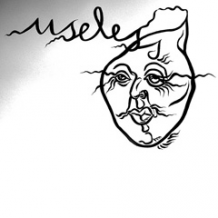






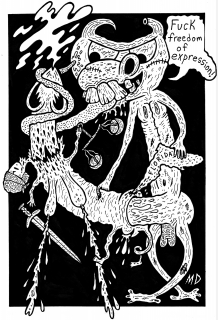




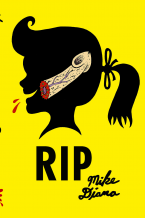
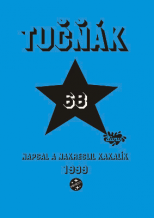
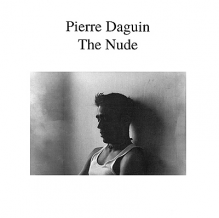
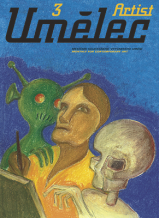


 New book by I.M.Jirous in English at our online bookshop.
New book by I.M.Jirous in English at our online bookshop.
Comments
There are currently no comments.Add new comment